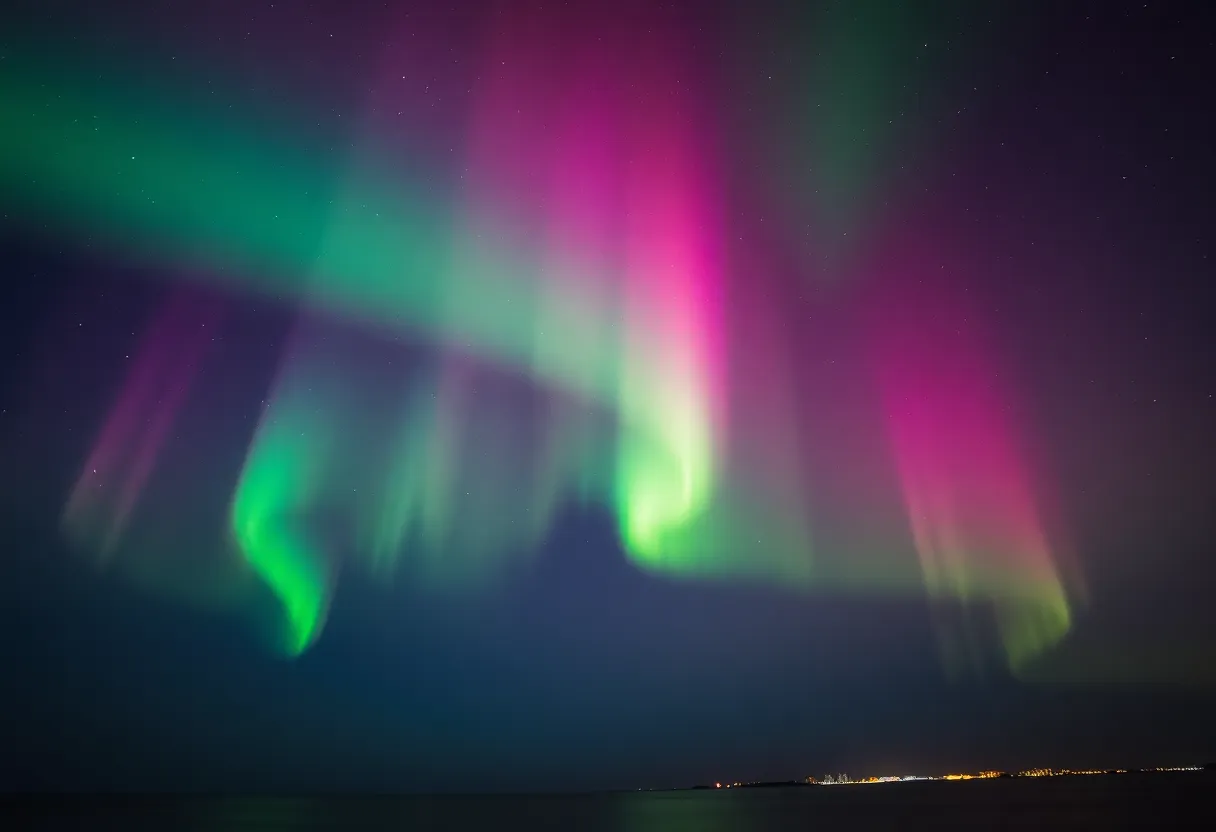News Summary
A severe geomagnetic storm alert has been issued for Jacksonville, indicating the potential for auroras on June 1. Classified as a G4 storm, residents may glimpse vibrant auroras under favorable weather conditions, especially along Florida’s First Coast. Although this storm is less intense than the historic G5 storm of May, it presents a rare opportunity for skywatchers in the Southeastern U.S. to witness this celestial phenomenon, with the last sighting in Jacksonville dating back to 1989.
Jacksonville – A severe geomagnetic storm alert has been issued for Sunday, June 1, by the NOAA Space Weather Prediction Center. This alert signifies the potential for rare and vibrant auroral displays across parts of the United States, with a particular focus on southern states. The incoming storm is associated with a coronal mass ejection (CME), which involves a substantial burst of solar plasma and magnetic fields traveling through space.
The NOAA has classified this event as a G4 storm, which is the second highest level on the five-point geomagnetic scale. Although this storm is anticipated to generate auroras, it is not expected to reach the same intensity as the historic G5 storm that was observed in May. That earlier storm provided vivid auroras visible across much of the continental U.S.
Residents in the Southeastern U.S., especially along Florida’s First Coast, may see a faint glow on the northern horizon if weather conditions are favorable. Observers in the upper Midwest and Northeast could potentially view the aurora directly overhead with the naked eye, assuming the skies are clear and after sunset. Stargazers in Jacksonville and its surrounding areas have a notable opportunity to experience this rare phenomenon, leading many to consider looking skyward on Sunday night. The last confirmed sighting of the Northern Lights in Jacksonville prior to this event dates back to March 13, 1989, and an earlier display was documented during the “Aurora Blitz” in September 1941.
The geomagnetic storm is expected to occur due to the interaction between the incoming CME and Earth’s magnetic field. This interaction can produce significant geomagnetic disturbances, which may disrupt satellite communications and VHF radios across various regions. While residents in the southeastern parts of the country may have a slim chance of witnessing the aurora, it is important to approach these expectations with realistic optimism.
Historically, the last global storm of similar magnitude occurred in October 2003 during the Halloween Solar Event. Auroras like the Northern Lights (Aurora Borealis) are a stunning natural light display caused when charged solar particles collide with gases in the upper atmosphere, creating a colorful spectacle. Common colors observed in auroras include green, pink, red, and violet, each depending on altitude and atmospheric conditions, with green being the most prevalent color seen.
Deeper Dive: News & Info About This Topic
HERE Resources
Additional Resources
Author: STAFF HERE JACKSONVILLE WRITER
The JACKSONVILLE STAFF WRITER represents the experienced team at HEREJacksonville.com, your go-to source for actionable local news and information in Jacksonville, Duval County, and beyond. Specializing in "news you can use," we cover essential topics like product reviews for personal and business needs, local business directories, politics, real estate trends, neighborhood insights, and state news affecting the area—with deep expertise drawn from years of dedicated reporting and strong community input, including local press releases and business updates. We deliver top reporting on high-value events such as the Jacksonville Jazz Festival, Riverside Arts Market, and World of Nations Celebration. Our coverage extends to key organizations like the Jacksonville Chamber of Commerce and JAXUSA Partnership, plus leading businesses in logistics, healthcare, and entertainment that power the local economy such as CSX Corporation, Baptist Health, and VyStar Credit Union. As part of the broader HERE network, including HEREOrlando.com, HEREStPetersburg.com, HERETallahassee.com, and HERETampa.com, we provide comprehensive, credible insights into Florida's dynamic landscape.






